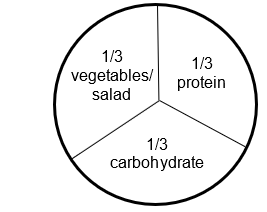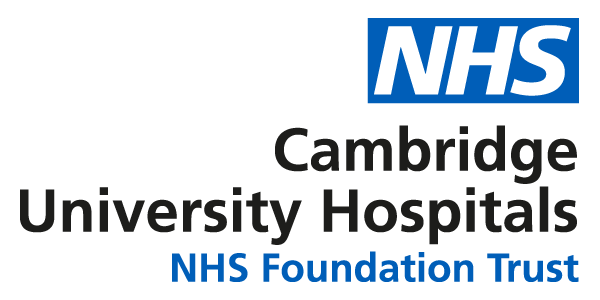The aim of this leaflet is to improve your understanding of carbohydrates; how carbohydrates affect blood glucose (also known as blood sugar) levels and how you can help your diabetes by making changes to your diet.
What are carbohydrates?
There are three key food groups: carbohydrates, protein and fat. A healthy, balanced diet is made up with a sensible combination of all three. Out of protein, fat and carbohydrate, only carbohydrate containing foods have a direct and instant impact on blood glucose levels. Having an understanding of carbohydrate containing foods and their effect on blood glucose levels is important when working towards better blood glucose control.
The diagram below divides carbohydrate foods into different categories; depending on the type of carbohydrate they contain (starch or sugar). Within each category, the different carbohydrate foods can affect blood glucose levels in different ways. See section on better choice carbohydrates for further information. The below lists are not exhaustive.
| Starch | Foods containing both starch and sugar | Sugar |
|---|---|---|
| Starch Bread, naan & chapatti | Foods containing both starch and sugar Cakes | Sugar Ice cream |
| Starch Crackers and crisp breads | Foods containing both starch and sugar Biscuits | Sugar Sweets, chocolate and mints |
| Starch Rice | Foods containing both starch and sugar Sweet pastries | Sugar Sugary fizzy drinks and squashes |
| Starch Potato | Foods containing both starch and sugar Sugary breakfast cereals | Sugar Fruit |
| Starch Pasta | Foods containing both starch and sugar | Sugar Fruit juice and smoothies |
| Starch Noodles | Foods containing both starch and sugar | Sugar Yoghurt |
| Starch Cous Cous & quinoa | Foods containing both starch and sugar | Sugar Milk |
| Starch Yam, cassava, plantain | Foods containing both starch and sugar | Sugar Syrup and treacle |
| Starch Cereals (e.g. wheat, bran, oats, barley, rye, millet, maize) | Foods containing both starch and sugar | Sugar Jam, marmalade & lemon curd |
| Starch Pies and pastries | Foods containing both starch and sugar | Sugar Honey |
| Starch Breaded and battered foods | Foods containing both starch and sugar | Sugar Chocolate spread |
| Starch Yorkshire puddings | Foods containing both starch and sugar | Sugar Tomato sauce and salad cream |
| Starch Dumplings | Foods containing both starch and sugar | Sugar |
When you eat carbohydrates, they break down in your gastrointestinal tract into a sugar called glucose to be absorbed. We need glucose for energy. When glucose is absorbed into the blood stream, blood glucose levels rise.
When blood glucose levels rise a hormone called insulin is released from the pancreas to help maintain blood glucose levels at a normal level (between 4-8mmol/l).

How much carbohydrate should I eat?
It is important to include carbohydrate foods as part of your diet but taking care with portion size is important – the more carbohydrate you eat, the higher your blood glucose levels will rise.
The amount of carbohydrate you should eat is related to your needs and can depend on a variety of different factors including your activity levels, weight goals etc. Having a high intake of carbohydrate foods can put an added strain on the pancreas and result in higher blood glucose levels. As a general rule of thumb, no more than half of a person’s daily energy intake should come from carbohydrate foods.
The examples below illustrate how you can divide your dinner plate to help guide appropriate portion control. If you are looking to lose weight, opting for a smaller sized portion of carbohydrate at meal times can be useful (image on the right, below).


Are there better types of carbohydrate foods to eat?
Some carbohydrate foods cause a more gradual rise in blood glucose levels as they are digested more slowly than other types. These types of carbohydrates have a lower glycaemic index (GI) and tend to be wholegrain varieties and higher in fibre and/or protein. It can be better to choose low GI options as they can help keep blood glucose levels lower after a meal and improve diabetes control. Page 4 shows foods low, medium and high GI. The graph below demonstrates the effect of glycaemic index on blood glucose levels:

GI is used to compliment what you are already doing when planning the overall balance of your meals. Although choosing lower GI options can help manage better blood glucose control, some low GI carbohydrates can also be high in fat, salt or sugar, such as: ice-cream, crisps or chocolate and so would not be healthy food choices.
While choosing lower GI options is beneficial to glucose management, the amount of carbohydrate eaten is still an important factor to consider. If a large portion of a low GI food is eaten, blood glucose levels can still rise higher than the normal level expected after a meal (up to 8mmols/l).
| High GI | Medium GI | Low GI |
|---|---|---|
| High GI White bread |
Medium GI
Wholemeal bread |
Low GI
Wholegrain bread |
|
High GI
French baguette |
Medium GI Pitta bread | Low GI Pasta |
| High GI Bagel | Medium GI Pizza | Low GI Baked beans |
| High GI Rice cakes | Medium GI White rice | Low GI Basmati rice |
| High GI Dates | Medium GI Raisins | Low GI Raspberries |
| High GI Baked potato | Medium GI Pineapple | Low GI Apple |
| High GI Oven chips | Medium GI Digestives | Low GI New potatoes |
| High GI Mashed potato | Medium GI Sweetcorn | Low GI Peas |
| High GI Cornflakes | Medium GI Shredded wheat | Low GI Porridge |
| High GI Weetabix | Medium GI Muesli | Low GI Milk |
| High GI Lucozade | Medium GI Popcorn | Low GI Chocolate |
| High GI Doughnut | Medium GI Ice cream | Low GI Jam |
Foods containing very little or no carbohydrate
| Protein sources |
Meat, poultry, fish, cheese, eggs, nuts, seeds, Quorn, tofu |
|---|---|
| Fat sources | Butter, margarine, oil, mayonnaise, cream |
| Some Fruit |
Grapefruit, cranberries (cherries have a very low GI so have a minimal effect on blood glucose levels) |
| Vegetables and salad |
Most vegetables and salads (sweetcorn, peas, lentils, beans, pulses, parsnips, carrots, beetroot and butternut squash contain more carbohydrate than other vegetables so if consuming large quantities or juicing, these may need to be considered a carbohydrate food) |
| Alcohol |
Non sweet spirits, dry wine/Champagne, prosecco (All alcoholic drinks, whether they contain carbohydrate or not, can cause blood glucose levels to fall several hours after consumption and increase the risk of a hypo) |
| Flavourings |
Herbs, spices, vinegars, pesto, mustard, salt, pepper |
| Sugar-free drinks |
‘Diet’ or ‘Zero’ fizzy drinks, no added sugar squash, sugar free flavoured water, tea (including herbal varieties), coffee |
| Artificial sweeteners |
Xylitol, sorbitol, aspartame, acesulfame K, saccharin, stevia |
Foods that contain no or little carbohydrate can still be high in fat, salt and calories, so care still needs to be taken when planning the overall balance of your meals to maintain good health.
Further information
This leaflet should provide you with a general overview of carbohydrate sources and the better choice carbohydrate foods. Other useful resources are also available including ‘Carbs and Cals’ by Chris Cheyette and Yello Balolia, which offers a visual aid in a book form and is also available as a downloadable app on mobile phones.


An alternative app similar to Carbs and Cals is: Nutracheck (opens in a new tab)
We are smoke-free
Smoking is not allowed anywhere on the hospital campus. For advice and support in quitting, contact your GP or the free NHS stop smoking helpline on 0800 169 0 169.
Other formats
Help accessing this information in other formats is available. To find out more about the services we provide, please visit our patient information help page (see link below) or telephone 01223 256998. www.cuh.nhs.uk/contact-us/accessible-information/
Contact us
Cambridge University Hospitals
NHS Foundation Trust
Hills Road, Cambridge
CB2 0QQ
Telephone +44 (0)1223 245151
https://www.cuh.nhs.uk/contact-us/contact-enquiries/

